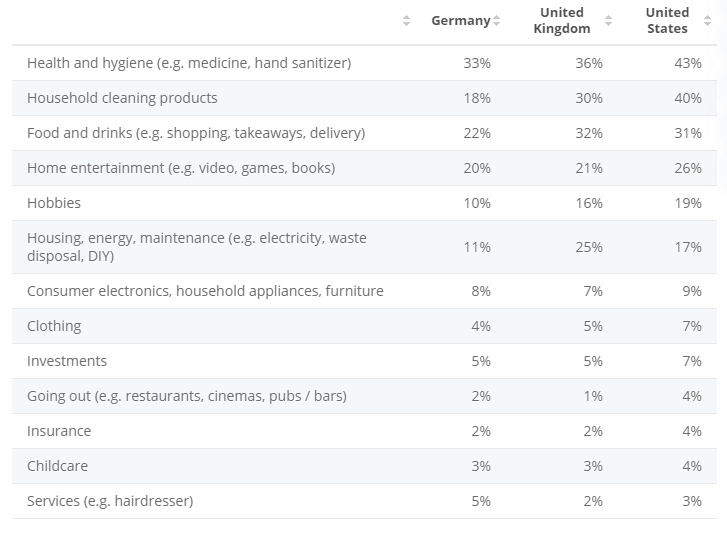How The Pandemic Is Changing eCommerce
It’s no longer a surprise that the COVID-19 pandemic has profoundly impacted billions of lives across the globe. Our routines and shopping habits have drastically changed since the outbreak of the new coronavirus. Until 2020, online shopping was simply a choice for millions in the United States who preferred browsing virtual catalogs and ordering products from eCommerce websites rather than visiting physical stores. However, the epidemic has been keeping many of us behind the shut doors. As we are changing the course of our lives, most of us move to the virtual world. We go online to find information, meet people, work, read, study, etc. Even those shoppers who used to prefer visiting brick-and-mortar stores had to dive into the world of online shopping due to retail stores‘ closures in the U.S.
For many people, the internet has become the primary destination for acquiring their favorite products or necessary supplies. eCommerce sales in the U.S. grew 30.1% for the first six months of 2020 compared to 12.7% between 2018-2019. People have been changing the way they shop and the quantity of the products and the goods they choose. The virus outbreak made everyone prioritize some products over others. Many decided to accumulate the items at the early stage of the epidemic that they expected to be out of stock, such as tissues and toilet paper.
While eCommerce websites saw the boost in sales, some had to deal with supply shortages due to panic buying and stockpiling. COVID-19 is a global crisis, and there are no exact predictions on how it will change the future, or if we ever will be able to go back to where we were before December 2019. However, the global outbreak of the virus will have a permanent effect on some aspects of eCommerce, which we will discuss in this article.
The COVID-19 Pandemic Will Increase the Number of Online Shoppers
Because of the high risk of the virus spread and the country’s epidemic situation, many schools, universities, and businesses have shifted operations online. People spend more time indoors, and shopping online has become an essential part of our new routines. According to an Adobe report, online grocery shopping saw an increase of 110%, and online electronics sales jumped by 58% in April.
During and after the pandemic, online stores must consider the increased number of new customers and the increased frequency of shopping of existing buyers when creating, manufacturing, or buying products. Experts expect eCommerce to grow by almost 20% in 2020, reaching total sales of $4.206 trillion. The largest eCommerce website in the world, Amazon, doubled its revenue and recorded $5.25 billion in net income for the three months between April and June 2020.
eCommerce Could Be the Future of Retail
While eCommerce is booming during the pandemic, retail sales at brick-and-mortar stores will decline 14% to $4.2 trillion in 2020, and it may take up to five years for in-store sales to return to pre-pandemic levels. There is no guarantee that shoppers who used to prefer walking into physical stores for buying essentials or other products will go back to their usual buying habits. If so, eCommerce could be the future of retail.
According to research, as more people shift to online shopping, 25,000 U.S. retail stores may close this year. However, there are no exact predictions, and just like before the COVID-19 outbreak, some brick-and-mortar stores that remain open even after the pandemic may offer unique shopping experiences or products that aren’t available for online purchase. It’s difficult to say whether or not eCommerce will take over completely. Still, with so many people transforming their lives by using electronic devices, from where they conduct most of their work, studies, and find forms of entertainment, it’s becoming predictable that the number of online shoppers will drastically increase until the end of the year.
A study in April 2020 surveying 2,200 U.S. adults showed that 24% of consumers wouldn’t feel comfortable shopping in a mall for more than six months, and only 16% would feel safe going back to malls in the following three months.
Products in Demand
The new reality comes with new priorities and needs. If some people were primarily shopping for clothes online, now the demand for clothing stores is not so high, as many have already shifted to working and schooling for home. As there is no dress code at home, unless there is a Zoom meeting (and even then, a formal shirt will do), there is no need to get numerous different outfits. There are not so many special gatherings and celebrations, so people dress up less frequently.
Health and hygiene products are in the highest demand, as health officials across the globe have been giving recommendations on using hand sanitizers and following hygiene rules to prevent getting infected with the virus. The best-seller of the pandemic is the hand-sanitizer. Even those eCommerce stores that didn’t offer personal hygiene items started manufacturing some. With such a global and massive health crisis, hand sanitizers will most likely become part of our lives even after the epidemic, so more eCommerce stores will keep selling them.
As people started spending more time at home, sales of household cleaning products also have boomed during the pandemic. The downloads of grocery apps have also increased, so shoppers don’t have to walk between the aisles at physical stores to get essentials. Essential retailers had to invest in improving their apps, contactless payments, online purchases for drive-thru pickup, delivery, and mobile checkout for their customers.
The demand for handcrafted items such as masks and home furnishings has been drastically increasing during the pandemic. As a result, for the first half of the year, Etsy’s sales, including Reverb, reached $4.04 billion, up 90.8% from $2.12 billion during the same period last year. eCommerce websites selling home decor and furniture products received 1.7 billion visits in March 2020, up from 1.56 billion global visits in January 2020.
Only 7% of Americans invested in clothing during the pandemic, according to the statistics in May 2020.
Products that were in the highest demand among online shoppers in March 2020 were disposable gloves, bread machines, cough & cold medicine, soups, dried grain and rice, packaged foods, fruit cups, weight training, milk & cream, and dishwashing supplies.

Products and services people spend more than usual on due to the COVID-19, according to 2,137 respondents in Germany, the United Kingdom, and the United States, by Statista.
Increased Traffic to eCommerce Websites
As the number of online shoppers has increased, the global traffic to eCommerce sites has also peaked. If you are wondering where most consumers are headed for shopping online, Statista, in cooperation with SEMrush, has published the list of the most famous online retail websites worldwide. The majority of virtual buyers shop on Amazon, eBay, Rakuten, Apple, Samsung, Walmart, Etsy, AliExpress, Ikea, and The Home Depot.
Need for Speed in eCommerce
More customers shifting to online shopping means more deliveries that eCommerce websites will need to handle during the outbreak and post-pandemic. With an eCommerce giant, Amazon, providing same-day Prime delivery service, shoppers expect stores to deliver goods much faster than ever before. The competition between eCommerce websites relies on the delivery speed as much as the assortment of products.
COVID-19 Changing the eCommerce Supply Chain
The disruption in supply chains became evident during the virus outbreak. No store – physical or online – was ready to face such an economical and health crisis, and provide enough sale items as there was demand. The highly coordinated and well-organized global supply chains became sudden chaos due to the pandemic and closed warehouses or canceled flights. The lockdown in China had an immediate effect on European and American retail companies. As the consumers were stockpiling, products flew off the shelf and out of stock at stores. Now, as most shoppers shift towards the internet, eCommerce supply chains will probably expand and become much larger to accommodate all the needs of consumers post-pandemic.

“The conceptual framework predicts that all supply networks, regardless of their organizational structure or management, will see an increase in inventory holdings to cushion a larger number of, and more intense blows.” – Frank Pisch, Assistant Professor of International Trade, the University of St. Gallen
Technology to Handle the Large Demand of Consumers
More sales mean more products that stores need to organize, label, and send to recipients. The eCommerce giant, Amazon, announced 100,000 new jobs in fulfillment centers and delivery networks due to increased orders. Although there are more than enough potential workers who would like to join the warehouses and speed up the eCommerce world, the need for speed is vicious. As the competition between some of the biggest companies is becoming fierce, consumers consider the delivery time to consider when buying products. To speed up delivery times and compete with online giants, some businesses like Walmart may soon start using drones to inspect labels and inventory.
These drones may begin buzzing outside of online shoppers’ windows as the demand for contactless deliveries has increased. Drones allow shoppers to receive packages while keeping a social distance from others. Chinese e-commerce giant JD.com debuted drone delivery in Hubei, China, as soon as COVID-19 hit. CVS and UPS began to offer prescription drug deliveries via drones from Matternet in 2020. Additionally, UPS announced a new partnership with Wingcopter to deliver packages via drones.
Amazon went ahead of the game with its Prime Air Delivery in 2016, getting the package to a receiver in 13 minutes via a fully autonomous aerial vehicle.
“We’re excited about Prime Air — a future delivery system from Amazon designed to safely get packages to customers in 30 minutes or less using unmanned aerial vehicles, also called drones. Prime Air has great potential to enhance the services we already provide to millions of customers by providing rapid parcel delivery that will also increase the overall safety and efficiency of the transportation system.”
Amazon Prime Air service is currently in development. The pandemic has embraced the need for contactless and fast deliveries, so it’s logical to predict many eCommerce stores in the future will want to utilize the drone delivery system for faster operations, without the risk of spreading the virus.
The Future
The world after the pandemic may never be the world we used to know. With the rising number of virtual shoppers, experts predict eCommerce’s drastic growth and the birth of millions of new online stores. Technology such as drones may become an inevitable part of virtual shopping. Online stores will change strategies and assortment due to COVID-19 due to the new priorities in the new reality.





